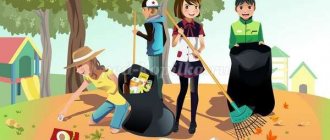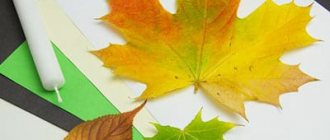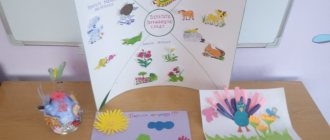Summary of a lesson on environmental education in the secondary group “Spring”
Municipal state-owned preschool educational institution - combined kindergarten No. 1 “Rucheyok”.
Barabinsky district, Novosibirsk region.
Summary of a lesson on environmental education in the middle group
"Spring"
VKK teacher: Plotnikova T.I.
Barabinsk, 2022
Target:
Strengthen children's ideas about spring and its signs.
Tasks:
• Clarify and generalize children’s ideas about the characteristic signs of spring, expand children’s knowledge about spring; • Expand and activate the vocabulary on the topic; • To develop children's ability to work in a team;
Equipment:
illustrations on the theme of spring, a letter with riddles, the game “Seasons”.
Progress of the lesson:
Educator:
Guys, the sun came to our lesson.
What is it like? Children: Cheerful, radiant, yellow, spring Educator:
Let's smile at each other like the sun at us, give each other a good mood.
Guys, the winter lasted a very long time with frosts, strong winds, snow, gray, gloomy skies. We all had to wear warm clothes (warm jackets, fur coats, hats, winter boots, felt boots). But in nature everything goes on as usual, and the harsh winter is replaced by a new season. Now you can try to guess what it’s called. (Take the envelope.) Educator:
Someone threw me at the window, Look at the letter.
Maybe it's a ray of sunshine that tickles my face? Maybe this little sparrow dropped it while flying? Who did the letter come from? You want to know, right? Then you have to try, you can guess the riddles! Educator:
Let's open the envelope and guess the riddles: There is a scarlet ball in the blue sky, It is bright and hot. (Sun.) White carrots grow in winter, And when the sun warms up, bitter tears flow. (Icicle.) The starling's housewarming party. He rejoices endlessly. So that a mockingbird could live with us - We made it... (Birdhouse) In a blue shirt, Runs along the bottom of the ravine. (Stream) Here on a branch is someone’s house, There are no doors in it, no windows, But it’s warm for the chicks to live there, That’s the name of the house... (Nest) There’s crackling and thunder on the river, This means an ice breaker, There’s ice on the river This means ...(Ice drift) The carrot is white, It grew all winter. The sun warmed up - I ate all the carrots (Icicle)
He has a carrot nose, He loves frost very much, He doesn’t freeze in cold weather. And spring comes and melts. (Snowman) He was the first to get out of the mud on the thawed patch. He is not afraid of frost, Even though he is small (Snowdrop) She comes with affection, And with her fairy tale. He waves his magic wand, A snowdrop blooms in the forest (Spring), The snowball melts, The meadow comes to life, The day is coming. When does this happen? (In spring.) Educator:
That's right guys, it's spring.
Look at these illustrations and tell us what is shown on them. What time of year is it in this picture? Children: Winter. Educator:
What do we see on it?
Children: Lots of snow, children sledding, trees covered in snow, children dressed warmly, etc. Educator:
What time of year is shown in the second picture?
Children: Spring. Educator:
In what subjects did you guess that it was spring?
Children: The sun is shining brightly, icicles, streams, thawed patches, birds have arrived, etc. Educator:
Let's give beautiful words to spring.
What's spring like? Children: Warm, beautiful, sunny, fragrant, ringing, bright, green, blooming, noisy. Educator:
Let's play the game
"Wonderful Bag"
.
Look at my bag, there’s something in it! Want to know what's in it? I'll tell you a secret that it contains a lot of small cards with pictures. You will come up to me, take out one picture at a time and name what is drawn on it and what time of year it happens. You need to put winter pictures on the field where winter is depicted, and spring pictures - for spring. (Children take turns coming up, taking a small picture, calling what is drawn on it and relating it to the time of year.) Educator:
Guys, name the signs of spring again.
Children: The sun is warming up, the snow is melting, streams have appeared, icicles are hanging from the roofs, thawed patches, the day has become longer, the night is shorter, birds are flying in, children and adults put on light clothes, a warm wind is blowing. Educator:
After what time of year does spring begin?
Children: Spring comes after winter. Educator:
Guys, are winter and spring similar to each other?
Children: No. Game "Say the opposite".
In winter the snow is white and in spring it is gray, in winter the snow is clean and in spring it is dirty, in winter the days are cold and in spring they are warm, in winter the days are short and in spring they are long, in winter the sun is dim and in spring it is bright, in winter the sky is gray and in spring it is blue, in winter the wind is cold, and in spring it is warm.
Educator:
What month does spring begin?
Children: Spring begins in March. Educator:
How many months does spring have?
Name them. Children: March, April, May Educator:
March-dropper, protalnik.
April-Aquarius, Birch. May-grass, pollen. Educator:
Why do you think people called the spring months that way?
Children's answers. Educator:
What is the wind like in the spring?
Children: Warm, fresh. Educator:
What is the spring sky like?
Children: Clear, bright, high, clean. Educator:
What other signs of spring do you know?
Children: Birds are returning from warmer climes (Demonstration of paintings with birds). The buds are swelling on the trees. (A willow twig with buds is demonstrated.). The buds burst and green leaves grow. Green grass appears, the first flowers are snowdrops. People dress in light clothes. Physical education lesson:
Sunshine, sunshine, Children walk in a circle, holding hands.
Golden bottom. Burn, burn clearly, so as not to go out. A stream ran in the garden, They ran in a circle. A hundred rooks have arrived and are “flying” in a circle. And the snowdrifts are melting, melting, Slowly squatting. And the flowers are growing. Stretch on tiptoes, arms up. Educator:
Children, who do you think brings spring to us?
Children: Sunny Teacher:
Of course, sunny.
The sun helped the appearance of streams, ringing drops, buds on trees, the first grass, the first leaves. The most important sign of spring is the gentle spring sun, which shines brightly and warms the earth. Educator:
What is your mood when there is no sun?
Children: Sad, bad, sad. Educator:
Show what you are like when you are sad.
What's your mood like when the sun is shining? Children: Cheerful, joyful Educator:
Show how you are when you’re happy.
In Russian folk nursery rhymes they said: Spring, red spring! Come spring, clear! Come spring with joy, Come spring with mercy, With the hot sun, With abundant rain, Bring the harvest to our happy land! Everyone has a lot to worry about in the spring. Birds build nests and hatch chicks. Animals take care of their offspring. And spring is a busy time for people. The field must be plowed and the wheat must be sown. Plant the gardens with vegetables. And everything must be done in due time. No wonder people say “Spring day feeds the year.” Rook on the mountain - spring is in the yard. Winter scares spring, but it itself melts. Spring is red with flowers, and autumn with pies. Teacher: Guys, now we will show you how flowers grow. Finger gymnastics “Flower”
A tall flower grew in a clearing.
Show a flower with your hands. On a spring morning I opened the petals. Spread your fingers. Beauty and nutrition to all petals Movement of fingers together and apart. Together they grow roots underground. Palms down, back facing each other, fingers spread. Educator:
What time of year were we talking about today?
Children: About spring. Educator:
What signs of spring do you remember?
Children: The sun is warming up, the snow is melting, streams have appeared, icicles are hanging from the roofs, thawed patches, the day has become longer, the night is shorter, birds are flying in, people are wearing light clothes, a warm wind is blowing. Educator:
Everyone tried hard today. Well done.



